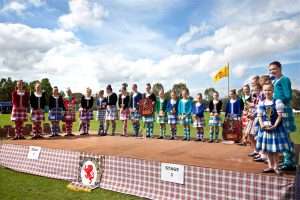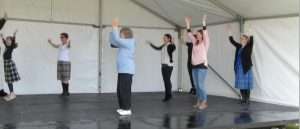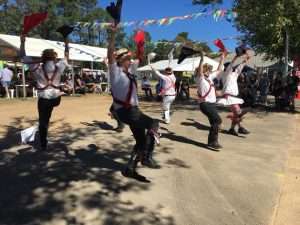Melbourne Highland Games & Celtic Festival 23 March 2025
Williamstown Highland Celtic Gathering 26 October 2024
Melbourne Highland Games & Celtic Festival 23 March 2025
Williamstown Highland Celtic Gathering 26 October 2024
Victorian Scottish Dancing Members Association

Members of The Victorian Scottish Dancing Members Association dance under the rules of the Scottish Official Board of Highland Dancing. Our dancers and judges participate throughout Australia and worldwide.
Highland dancing encourages a discipline and pride in competitive and non-competitive events. It instils in the dancer confidence and with choreography a sense of fun and enjoyment with the chance to meet and develop long standing friendships.
Within the Highland dances, legends and images of Scotland’s history are performed on the stage. These vary from the mighty stag of the highlands to the flight of Bonnie Prince Charlie. Each dance is unique to its own and has a story to tell about Scotland’s rich heritage. Some of the more well-known dances include the Highland Fling, the Sword Dance, the Reel of Tulloch, and Flora McDonald’s Fancy.
Victorian Scottish Union Dancing (Glenbrae)

Glenbrae Celtic Dancers Inc (“Glenbrae”) is an affiliated Society under the auspice of the Victorian Scottish Union (“VSU”). The VSU was established in 1905 and has continuously conducted highland dancing and Scottish events since that time. Glenbrae are responsible for the conduct of competitions, exhibitions, and classes within the Metropolitan area.
Our affiliation with the VSU enables us to perform regularly in the Scottish Community and we are privileged to perform for the Robert Burns Club of Melbourne, Brunswick Scottish Society, Clan Donald, Mornington Peninsula Caledonian Society, and many other organisations throughout the year.
Our dancers like to perform both traditional dances as originally written, and also to incorporate choreography to modern music. Our dancers still wear the full kilt, plaid, and hat as was traditional in the early 1900’s for competition although we do alter our uniform for various performances.

Highland Hustle is a fun dance workout inspired by Scottish Highland dance and Ceilidh steps that are choreographed to funky, upbeat music.
It builds gradually so you can find a pace that is right for you. All fitness levels are catered for with low to high impact options offered in each routine, and you don’t need dance experience to take part! We also include exercises for toning and stretching to improve flexibility.
Two left feet…? It really doesn’t matter. It’s all about having fun and dancing to some great tunes, while improving fitness, strength, flexibility and boosting your mood!

The Victorian Irish Dance Academy, based in Tecoma, runs Irish dance classes for students of all ages and levels. Dancers from the academy will showcase the best Irish dancing has to offer, from traditional reels and ceilidh dances to modern fast-paced hard shoe numbers.

While the origins of Morris Dancing may or may not be in England, Spain, Germany, or somewhere else in Europe entirely; and may or may not have included pagan rituals and women; modern Morris in Australia is much less shrouded in those maddening and mysterious mists of time.
Australian Morris sides dance what we believe to be an English folk tradition, covering local dialects of dance from the subtle variations of Cotswold Morris to the North West Clog and the Welsh Border dances.

Scottish Country Dancing can be traced back to the assemblies and balls of the 18th and 19th centuries. SCD is social dancing and Scottish Country Dancers mainly dance for pleasure, finding the experience both physically and mentally enjoyable (smiles and eye contact are almost mandatory).
Scottish country dancing should not be confused with Scottish highland dance which is a competitive solo form of dance.
Scottish country dances consist of formations with a different sequence for each dance. Some dances are easy while some take longer to learn. However, once you have learned the basic steps and some of the formations you should be able to participate happily and easily wherever there is country dancing.

When Wales and the performing arts are mentioned, most people in Australia think of male voice choirs, not dancing. Even in Wales itself, the profile of dancing is low in comparison with that of music, song and poetry, the traditional art forms that are emphasised at eisteddfods in Wales. Sadly, this can be attributed to Welsh dancing having nearly died out in the 19th century largely because of the Calvinistic religious revival movement which regarded dancing as wicked.
Welsh dancing saw a revival in the 20th century through the efforts of dance historians and the formation of the Welsh Folk Dance Society in 1949. Welsh dances share many features in common with other dance forms in the British Isles, with Scottish and English Country Dancing in particular and, in some instances, with Morris dancing as well. What differentiates Welsh dancing from the Scottish and English is the style and variety of music danced to (Wales being a musical nation) and also the complexity of many popular Welsh dances.